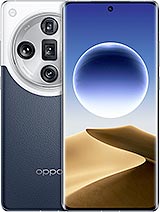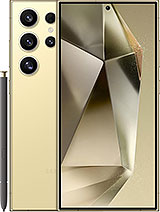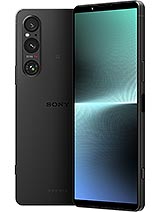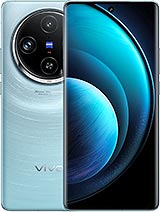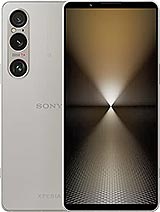Sony Xperia 1 VI review

New 120Hz LTPO OLED panel
Sony takes a different approach with its newer Xperia and we believe the changes are for the better. The Xperia 1 VI is now running a more modern LTPO OLED panel capable of variable refresh rate - 1-120Hz and it adopts a more conventional 19.5:9 aspect ratio, instead of the taller 21:9 found on previous versions. As a result, the handset is now wider.

Sony is scaling down resolution - from 4K down to FHD+. We welcome this change because 4K is an overkill for the said diagonal (6.5") and the lower resolution will potentially be easier on the battery too.

The display's bezels are also an unorthodox solution that only a few smartphone makers have adopted. The chin and the top bezel are thicker and there's no cutout for the selfie camera. All the sensors and the camera fit in the top bezel and part of the reason is probably the speakers. They are both front-facing and require additional space. It's easier to hold the phone horizontally this way too.

Other features worth noting are support for 10-bit color depth, 240Hz touch sampling rate during gameplay and AI-powered algorithms that adjust contrast, color and clarity in certain scenarios. There's also a new Sunlight feature, which isn't a separate mode, but it does improve sunlight legibility quite a bit, at least compared to the older Xperia 1 V. You can clearly see all the detail in the highlights and shadows in high-contrast scenes when watching videos under direct sunlight.
Interestingly enough, HDR10 playback is supported in the YouTube app, but Netflix didn't play well with the display. Widevine L1 certification is available for high-quality streaming in Netflix and Amazon Prime Video, but no HDR support there. It could be due to the nature of our pre-production unit.
We suspect the Sunlight functionality doesn't rely on the ambient light sensor alone but it adjusts the tonal curve for better visibility.
And since this is a BRAVIA-branded screen, Sony showcased how the phone's screen looks next to a big BRAVIA OLED TV and we couldn't find any difference. The display is indeed tuned like a big-screen Sony TV.
Regarding brightness, the display offers a big improvement over its predecessor. In manual mode. In manual mode, we got up to 792 nits, while in auto mode the screen boosted to 1,310 nits. That's a solid 30% increase.
Keep in mind that we got these results in Creator color mode, which adds a few nits of brightness, while the Standard preset is ever so slightly dimmer, but not enough to notice with the naked eye. The Creator mode is supposed to offer more accurate color reproduction too.
Refresh rate control
Although Sony advertises granular refresh rate control, we couldn't get the display to go down to 1Hz. When you leave the screen idle, it shows 15Hz and we couldn't get below that even at maximum brightness. LTPO panels usually dial down to 1Hz only when brightness is high enough and typically hang around 10-15Hz.

In any case, the system is quick to react to changes and boosts the refresh rate to 120Hz in all apps we've used. Playing YouTube videos triggers a semi-appropriate refresh rate, though. For instance, 24fps and 30fps videos are played at 48Hz and 60Hz, respectively, while 60fps videos are matched at 60Hz. Playing videos in the default Google Photos gallery also brings down the refresh rate to 60Hz regardless of the video's framerate.
Battery life
Although the new Xperia 1 VI has the same battery as before, rated at 5,000 mAh, the new chipset (Snapdragon 8 Gen 3) and the new more efficient 1080p+ LTPO OLED make a big difference in overall endurance. Not only does the Xperia 1 VI outperform its predecessor by a huge margin, but it also shames its competitors.
The Active Use Score is 17:27h and at the time of writing puts the Xperia 1 VI in second place in our all-time battery ranking. The handset posts particularly impressive web browsing and video playback runtimes, which you'd expect if you employ a lower-resolution LTPO panel.
So, for a phone that's touted as a multimedia-centric device, it makes sense to offer long runtimes in these scenarios. We are happy to see exceptional endurance in the web browsing and video playback scenarios. The gaming test returned a slightly above average score, while the call time is on par with other devices.
Charging speed
The handset comes without a charger or a proper cable, so you have to acquire the two on your own. The phone supports up to 30W charging over the Power Delivery 3.0 protocol and we tested the device using Sony's own 30W charger.
The results are underwhelming and unsurprising at the same time. Sony phones are historically slow to charge and the new Xperia 1 VI is no different. And although the charging capabilities haven't changed, Sony was able to shave off a few minutes to full charge, compared to the older Xperia 1 V. It took around 90 minutes to charge from 0%, while a 30-minute charge replenished 50% of the battery.
Sony promises extremely slow battery degradation and thanks to the new charging algorithms baked into the so-called Battery Care feature set, the cell should show minimal signs of degradation after 4 years of use. Sony even provides a charging limiter, so you can avoid overcharging ad set it to 80% or 90%.
Speakers
The Xperia 1 VI retains the same great front-facing speakers as its predecessor and Sony promises better quality and higher loudness too. They appear to be perfectly balanced and offer Dolby Atmos tuning along with various tuning modes.
In our loudness test, the stereo setup indeed scored higher than before with an "Very Good" score of -24.3 LUFS.
But these speakers aren't just loud, they sound great too, even at maximum volume. Subjectively speaking, these are among the best stereo speakers we've heard on a phone. The vocals and the highs are clear without any noticeable distortion at high volume levels, while the bass is just right - it gives tracks that much-needed fullness, but without muffling the vocals in the process. This set of speakers is perfectly balanced and you can enjoy music and videos loudly.
Keep in mind that turning the Dolby Atmos tuning off will have little effect on quality but a big one on loudness.
Use the Playback controls to listen to the phone sample recordings (best use headphones). We measure the average loudness of the speakers in LUFS. A lower absolute value means a louder sound. A look at the frequency response chart will tell you how far off the ideal "0db" flat line is the reproduction of the bass, treble, and mid frequencies. You can add more phones to compare how they differ. The scores and ratings are not comparable with our older loudspeaker test. Learn more about how we test here.
Reader comments
- Anonymous
- 28 May 2024
- KkV
Another new flagship, another phone company claiming to be "green" by taking out the charger from the box, and in this case the USB-C cable again. "Vote with your wallet" is useless when almost everyone is getting brainwashed that...
- S
- 27 May 2024
- U$S
Only eupopean version support E-sim.. Most of it 256gb no esim support
- T
- 27 May 2024
- U$S
Thailand good quality

